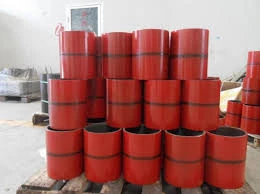- Afrikaans
- Albanian
- Amharic
- Arabic
- Armenian
- Azerbaijani
- Basque
- Belarusian
- Bengali
- Bosnian
- Bulgarian
- Catalan
- Cebuano
- Corsican
- Croatian
- Czech
- Danish
- Dutch
- English
- Esperanto
- Estonian
- Finnish
- French
- Frisian
- Galician
- Georgian
- German
- Greek
- Gujarati
- Haitian Creole
- hausa
- hawaiian
- Hebrew
- Hindi
- Miao
- Hungarian
- Icelandic
- igbo
- Indonesian
- irish
- Italian
- Japanese
- Javanese
- Kannada
- kazakh
- Khmer
- Rwandese
- Korean
- Kurdish
- Kyrgyz
- Lao
- Latin
- Latvian
- Lithuanian
- Luxembourgish
- Macedonian
- Malgashi
- Malay
- Malayalam
- Maltese
- Maori
- Marathi
- Mongolian
- Myanmar
- Nepali
- Norwegian
- Norwegian
- Occitan
- Pashto
- Persian
- Polish
- Portuguese
- Punjabi
- Romanian
- Russian
- Samoan
- Scottish Gaelic
- Serbian
- Sesotho
- Shona
- Sindhi
- Sinhala
- Slovak
- Slovenian
- Somali
- Spanish
- Sundanese
- Swahili
- Swedish
- Tagalog
- Tajik
- Tamil
- Tatar
- Telugu
- Thai
- Turkish
- Turkmen
- Ukrainian
- Urdu
- Uighur
- Uzbek
- Vietnamese
- Welsh
- Bantu
- Yiddish
- Yoruba
- Zulu
what are the differences between casing and tubing?
Understanding the Differences Between Casing and Tubing in Oil and Gas Wells
The oil and gas industry relies on a variety of components to extract resources efficiently and safely. Among these components, casing and tubing are two critical elements in the construction of drilling wells. While they may seem similar at first glance, casing and tubing serve distinct purposes and have different characteristics. Understanding these differences is crucial for anyone involved in the drilling process or the management of oil and gas wells.
Casing The Structural Backbone
Casing refers to the series of heavy steel pipes installed in the wellbore during the drilling process. Its principal purpose is to stabilize the well and prevent collapse, ensuring the safety of both the well and the surrounding environment. Casing also serves as a barrier to protect groundwater from contamination by oil, gas, or other fluids present in the well.
Casing is typically installed in sections, with each section referred to as a string. The installation process involves drilling to a specified depth, followed by the insertion of casing pipes into the wellbore. After insertion, cement is pumped into the annular space between the casing and the wellbore to secure the casing in place and provide additional support.
There are various types of casing, including surface casing, intermediate casing, and production casing, each serving a specific role. For instance, surface casing is installed at the initial stages to provide stability, while production casing is positioned deeper to allow for resource extraction.
Tubing The Conduit for Production
In contrast, tubing is a smaller-diameter pipe that is inserted inside the casing and serves as the conduit through which oil or gas is brought to the surface. Tubing is essential for the production phase of drilling because it allows for the efficient transport of hydrocarbons from the reservoir to the surface facilities.
what are the differences between casing and tubing?

Unlike casing, tubing is designed to withstand the pressure of the fluids being transported. It may also be lined or equipped with other technologies to optimize production and protect against issues like corrosion. Tubing is typically assembled in sections and can be removed and replaced as needed, which allows for easier maintenance and upgrades.
Key Differences Between Casing and Tubing
1. Purpose The primary function of casing is to provide structural support and protect the wellbore, whereas tubing is specifically designed for the transport of oil and gas to the surface.
2. Diameter and Design Casing has a larger diameter compared to tubing. The design and thickness of casing are tailored for strength and stability, while tubing is optimized for flow and pressure resistance.
3. Installation Casing is cemented into place during the drilling process, forming a permanent part of the well structure. In contrast, tubing is inserted after the well has been completed and can be easily removed or replaced.
4. Lifecycle Casing is intended to remain in place throughout the life of the well, while tubing may require replacement or upgrades as part of the ongoing production process.
In summary, casing and tubing play vital yet distinct roles in oil and gas extraction. Understanding their differences is essential for those working in the industry, as it influences decisions related to drilling, production, and maintenance processes. Proper management and selection of both casing and tubing are critical for ensuring efficient resource recovery and environmental protection throughout the life of a well.
-
Tubing Pup Joints: Essential Components for Oil and Gas OperationsNewsJul.10,2025
-
Pup Joints: Essential Components for Reliable Drilling OperationsNewsJul.10,2025
-
Pipe Couplings: Connecting Your World EfficientlyNewsJul.10,2025
-
Mastering Oilfield Operations with Quality Tubing and CasingNewsJul.10,2025
-
High-Quality Casing Couplings for Every NeedNewsJul.10,2025
-
Boost Your Drilling Efficiency with Premium Crossover Tools & Seating NipplesNewsJul.10,2025







